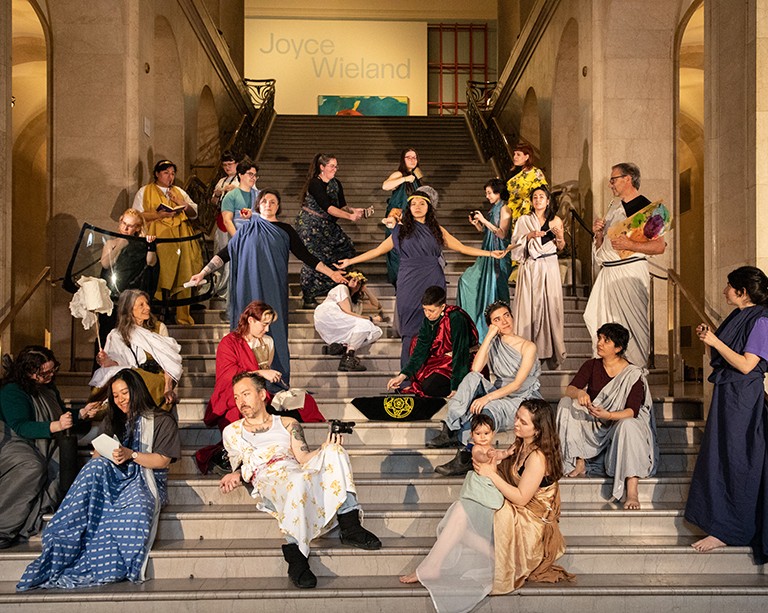A need for authenticity drove high fashion to embrace and then subsume streetwear, writes Pierre-Yann Dolbec

For decades, high fashion set itself apart through exclusivity — its designs, prices and cultural gatekeeping kept the industry’s elite firmly in control. But a shift happened in recent years, and luxury brands that once dictated taste are now borrowing, blending and even fully embracing designers and styles that emerged from street culture. Hoodies, sneakers and graphic tees now command premium price tags at Louis Vuitton, Gucci and Balenciaga.
How did this transformation happen? And more importantly, who truly benefits from it?
In a study published in the Journal of Marketing Research, Pierre-Yann Dolbec, an associate professor in the Department of Marketing at the John Molson School of Business, examines how streetwear designers gained entry into the elite world of high fashion. It’s an evolution that gave some designers greater visibility and status, even as luxury brands consolidated their influence.
However, he argues, it is the fashion companies that reap the most reward by co-opting street culture and legitimacy.
“By absorbing luxury streetwear and their designers, the elites gained all of the cultural capital associated with these designers along with ample media coverage,” he says. “But they also started exerting control over these designers by enforcing their companies’ long histories. The designers began talking about bringing streetwear to luxury brands, but they had to do that within the legacy of the brand.”
Learning from the streets
Dolbec writes that this relatively new hybridization of streetwear and high fashion serves both the elite fashion houses and the designers in real but very different ways.
Dolbec identifies two main processes through which this happened.
First, “streetwear designers merged street style with high-end quality and exclusivity, inventing a new category that straddled both worlds. Think limited-release sneakers and hoodies made in Italy in high-end leather and fabrics,” he explains. This new type of designer proved they could measure up to luxury standards — from craftsmanship to pricing — making themselves comparable to elite fashion houses.
“Second, they centred their authenticity — their designs maintained their cool factor and cultural relevance. For example, they used strategies like drops to generate desire, relied on intermediaries like hip-hop artists to push their products and associated with domains like street art, skate culture and tattooing.”
In doing so, streetwear broke the barriers that long kept luxury fashion exclusive. These hybrid creations challenged the elite boundaries of fashion, forcing fashion houses to take notice.
High fashion subsumed new styles
Faced with the rise of luxury streetwear, fashion houses had a choice: compete or collaborate. They chose to embrace and absorb luxury streetwear. Renowned houses, from Louis Vuitton to Dior, began recruiting streetwear designers or merging streetwear styles — like hoodies and chunky sneakers — into their lines.
High-profile collaborations, such as the 2017 Louis Vuitton x Supreme collection, grabbed headlines. “It was a moment that signalled to the industry — and the world — that the old rules of exclusivity no longer applied,” Dolbec says. “Street culture had moved from counterculture to runway centre stage.”
While this created the impression — and buzz — that fashion was becoming more democratic and authentic, Dolbec says the elite firms still exerted their financial influence to retain their status.
Finding ways to maintain autonomy and authenticity
Although the relationship does seem to favour the elite firms, Dolbec says there are ways streetwear designers can counter their subsumption.
These include taking advantage of the still fuzzy boundaries found in hybrid fashion to redefine concepts of luxury while still using proximity to it to gain visibility and cultural consonance. Designers who value their relationships with nonelite customers can use alternatives to high prices to bestow exclusivity, such as limited runs. They can also use their platforms to cultivate their autonomy through collective capacity-building, such as creating scholarships, training programs and other community initiatives.
“Although the elite firms can use the power afforded by their financial resources, there is still hope for some forms of resistance to maintain autonomy,” he says.
Read the cited paper: “From Streetwear to High Fashion: How Nonelite Producers Use Hybridization to Enter an Elite Category.”


